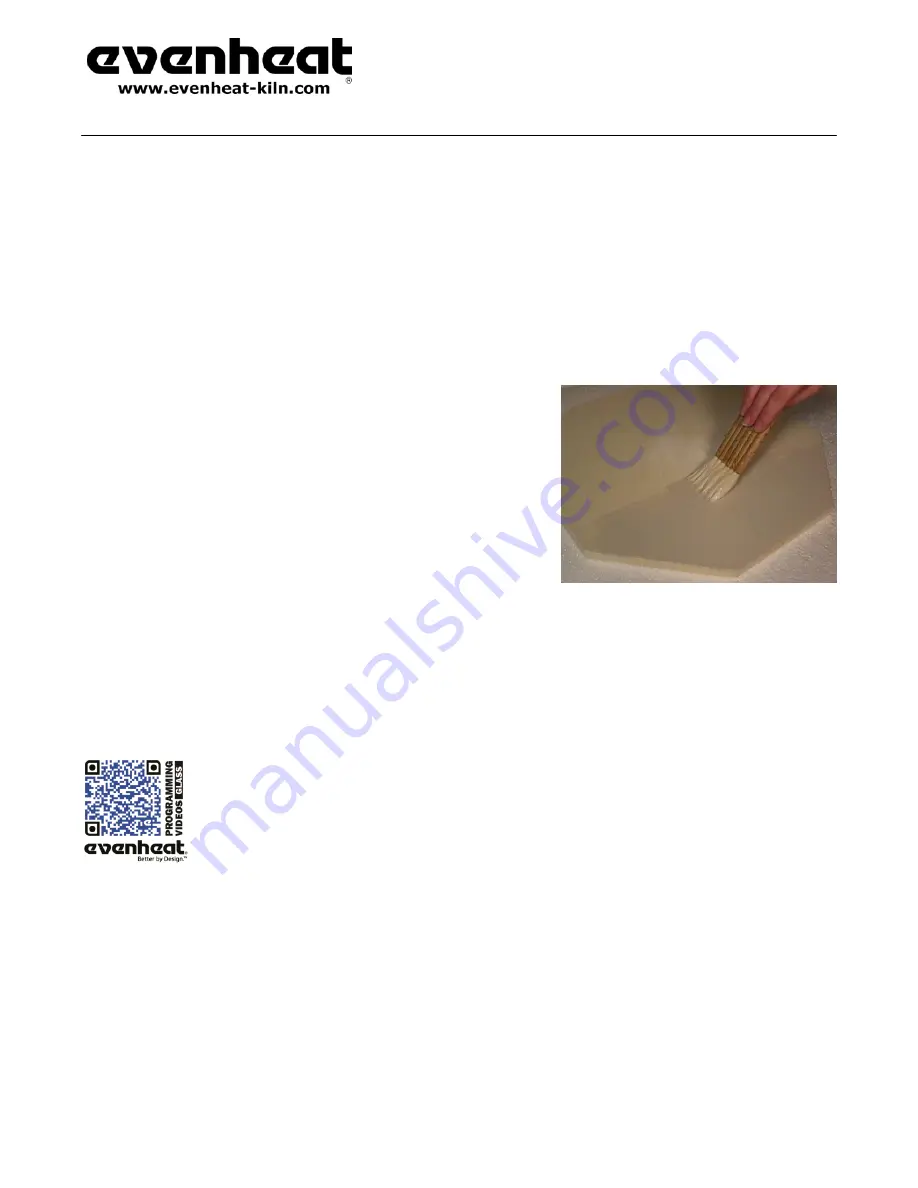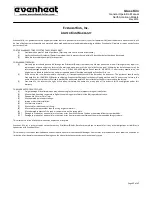
Glass Kiln
General Operation Manual
North American Models
May 2015
Page
9
of
17
Preparing to Fire
Glass Preparation
For successful glass firing all glass being fused or otherwise combined must have the same expansion characteristics or COE. Attempting to kiln work
glasses that do not share the same COE will result in breakage. This breakage occurs from stress that is created by COE differences.
It’s important that your glass be clean. Fingerprints and oil from the cutter can fire into the surface of the glass and leave an unwanted film. You may use
dish soap, commercial glass cleaner or isopropyl alcohol. Dry the glass with a soft towel. Handle with care.
Kiln Wash
Kiln wash, a.k.a. shelf primer, is a protective coating used to prevent glass from sticking to the firing surface. All items used for firing from shelves to molds
must be coated with this kiln wash. Kiln wash is normally supplied in a dry form and must be mixed with water before application.
Mix the kiln wash to desired consistency. Water to powder ratios are usually given on the
package. Use a soft brush to apply the wash to the surface of the shelf or mold. Keep in mind
that your glass will take on the texture of the shelf or mold. A very smooth coating is generally
the goal.
Many coatings will be needed to fully coat the shelf with reasonable drying times between
coats. It is possible to hasten the drying process by loading the shelf or mold into the kiln and
taking the temperature up to 400 to 500°F. Be sure that the shelf or mold is completely dry
before using.
While it’s possible that the kiln wash will remain on the shelf or mold after many firings it’s
always a good idea to inspect for wear and re-coat if necessary.
Pre-Fire
Evenheat suggests that you perform a test fire with your new kiln before putting it into service.
A pre fire gives you an opportunity to become familiar with the features and functions of the kiln before committing to an actual firing. It also allows your
heating elements to form a protective oxide barrier. A light lubricant was used in the production of your heating elements. The pre fire will burn this off,
almost immediately! You may notice a light smoke as this occurs. It’s normal.
A separate control manual is included on the manuals disc included with your kiln. Refer to these manual(s) for controls programming instructions.
Program the control to reach 1200°F as fast as possible and hold for 15 minutes (see the included controls programming manual for instruction). Once the
kiln reaches 1200°F it will begin to hold for 15 minutes. As it’s holding you will notice audible clicks. These clicks are made by the control relays turning the
heating elements on and off and it’s a normal and welcome sound.
We would encourage you to repeat this pre fire procedure if you’ve never fired a kiln of this design before. You won’t hurt anything. Kilns are wonderful
machines and they’re even more wonderful when you know what to expect and how to work them.
Scan this QR code to view instructional programming videos for both the Evenheat Set-Pro and
Rampmaster controls.
You will also find these instructional videos and manuals on our web site www.evenheat-kiln.com



































